Traditional group health insurance is akin to a car that breaks down every year and costs more to fix than it did the year before. Forward-thinking employers are now looking for a better way.
Currently, two models are grabbing employers’ attention as viable healthcare coverage options: an ICHRA (Individual Coverage Health Reimbursement Arrangement) and Reference-Based Pricing (RBP). Both coverage options are offering significant reductions in healthcare premiums and other medical costs.
Case studies show ICHRA options are saving some businesses six-figures in healthcare costs already. A state of Tennessee study on RBP shows cost savings on numerous healthcare procedures using RBP benchmarks.
Can one of these options be the future of health insurance for American businesses?
ICHRA: The “Choose-Your-Own-Adventure” Model
ICHRAs allow employers to offer a set dollar amount per employee the employee uses to buy their own individual health plans. The employer reimburses the premiums tax-free and can choose other covered medical expenses to reimburse.
Why Employers Like ICHRA
- Cost control: Employers set the budget and stick to it, obtaining cost certainty without sudden 10% premium hikes.
- Flexibility: Employees pick the coverage option that works for them, making them happier with the benefit program they obtain thanks to the employer. There’s no more trying to make one group plan work for a 24-year-old single employee and a 52-year-old employee with a family of five.
- Portability: Employees can take their plan with them if they leave because they obtain the coverage in the Marketplace, and it’s tied to the individual employee, not the employer.
- Tax Savings: Employers can deduct employee reimbursements for premiums and other covered medical expenses as business expenses. Employees won’t have to pay taxes on these reimbursements.
The Issues with ICHRA Employers Don’t Like
- Education is critical: You can’t just hand someone $400 and say, “Good luck!” Agents need to explain how the Marketplace works, what subsidies mean, and why “bronze” isn’t necessarily a bad word.
- Market variability: Some areas have many individual plan options, but others may have only a few. Individual plan availability makes ICHRA work, keeping costs low, but if plans aren’t available to employees for whatever reason, the ICHRA strategy falls apart.
- Affordability test matters: If the ICHRA offer isn’t “affordable” by IRS rules, employees may not receive premium subsidies, and now there are compliance headaches.
With these issues in mind, employers with smaller numbers of employees or employees living in more populous counties are probably the best fit for ICHRA coverage due to the size of the individual plan markets in these areas.
Reference-Based Pricing (RBP): The “Take Control” Approach
At its core, RBP is about ditching traditional networks and paying providers based on a benchmark (Medicare benchmarks of 120% to 160%). Instead of employers negotiating their fee schedules with the Payors within their already-set parameters based on the business size, claim history, etc., employers set reimbursement limits based on a benchmark.
Why This Gets Attention
- Reduces and manages costs. This model reduces spending, especially on hospital services, by establishing a ceiling for expenses paid in the market, usually by Medicare. Many employers cover employees at higher rates with payors due to population size, claims history, and other factors actuaries examine.
- Transparency. Everyone knows what’s being paid and why, so there’s no secret PPO contract pricing to endure.
- More control. Employers aren’t handcuffed by networks and have more insight into what costs look like moving forward.
But here’s the catch:
- Balance billing. If a provider doesn’t accept the reference price, they might bill the employee for the difference. This can be stressful for employees, especially if HR isn’t ready to explain it.
- You need strong partners. A good RBP setup includes legal protection, patient advocacy, and a Third-Party Administrator (TPA) who knows what they’re doing. A strong admin team like this isn’t cheap, but these options are needed to work successfully.
- Communication is everything. Employees must understand how RBP works, or they’ll panic the first time they see a hospital balance bill. A strong, comprehensive communication plan with constant regular outreach is needed for success.
- Costs aren’t certain. Benchmarks setting ceilings aren’t the same as fixing the costs. You still have a range of costs may fall into, with catastrophic costs still negatively impactful.
So, the best RBP fit is a mid-sized or larger employer that is self-funded or ready to move in that direction and wants more control over its healthcare spending.
So, Which One Is the Future?
Here’s what we know:
- ICHRA is more “plug-and-play.” It’s easier to implement quickly, especially for groups under 50 employees who don’t want to deal with the administrative complexity of group plans. ICHRA reimbursements have individual plan maximum-out-of-pocket limits to protect employees, with employers protected by the allowance limit on devastating expenses.
- RBP is more complex but has cost management. RBP provides employers more control over managing costs by setting benchmarks against Medicare on what they’re paying and why. RBP manages catastrophic costs under the benchmark parameters to protect employers.
- The traditional Payor-centric model is under pressure. Payors still run the employer-employee healthcare coverage show, but their grip is loosening because employers need more options. Flexibility, savings, and transparency are just a few of the items employers seek now to meet their employees’ demands.
ICHRA and RBP check many of those boxes for employers, driving the rise in interest in these options.
What Should Agents Be Doing?
- Start employer conversations early. With the economic uncertainty already in place and rising, don’t wait for a renewal nightmare to bring these ideas up.
-
- Ask clients what they’re experiencing and what they want to address. Is it cost, control, or employee complaints? This will tell you whether ICHRA, RBP, or something else is a better solution.
- Build a referral network so you have that RBP or ICHRA expert ready to help you be the problem-solving hero.
- Stay current, as these models change regularly. Payors are testing ICHRA-friendly plans, and TPAs are building better RBP support tools, so be the one who brings the latest and greatest ideas to the table.
The future of employer-sponsored health insurance will probably involve a messy mix of options customized by employer size, budget, risk tolerance, employee demographics, and living location. But one thing’s certain: agents who understand these newer ICHRA and RBP models and talk about them in plain English will have a serious edge.
ICHRA and RBP are great tools but are not easy to learn. That’s why it’s more important than ever for agents to navigate these options with straightforward, honest advice about these opportunities.
Contact Agility at (866) 590-9771 or email support@enrollinsurance.com to increase your insight and understanding of ICHRA and RBP. Agility Market Leads and Product Specialists are also available to advise you on local market conditions and products you need to know to facilitate discussions with employers about these healthcare coverage options.
Agility can also add you to our free weekly email list for tips and vital information!



